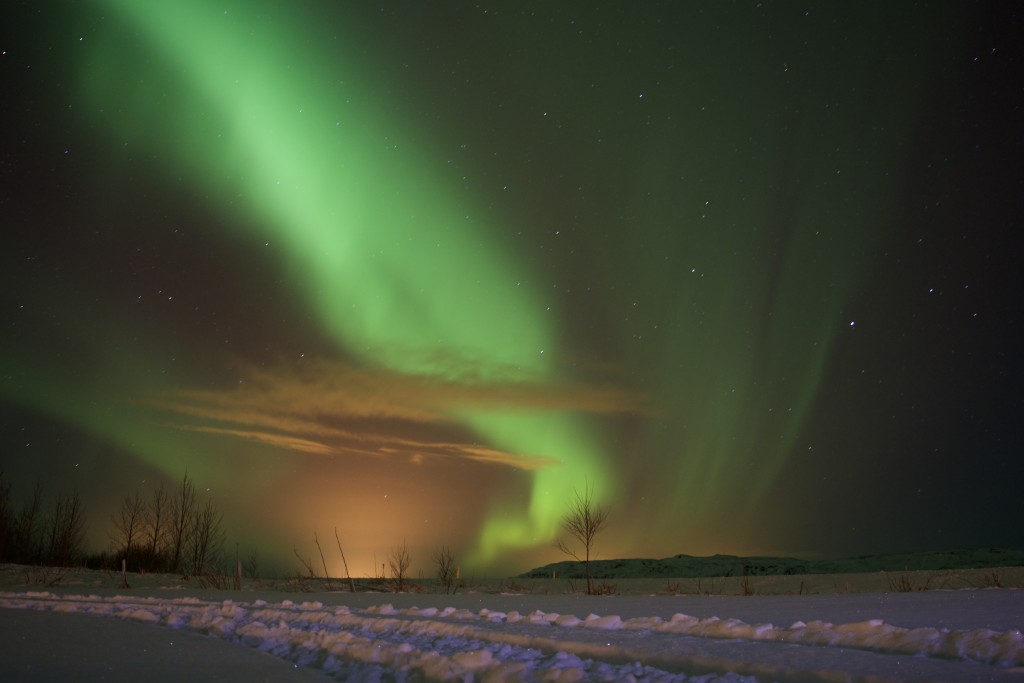One night, as we sat in the Solheimar hot pot under the stars, a few members of our group struck up a conversation with a caretaker who works in the town. We were talking to him about how we wanted to see the Northern Lights, as we had been in Iceland for almost a month and hadn’t yet seen any activity. Every night we’d find ourselves looking online at different forecasts and going outside in the hopes we’d see the faintest shimmer. He told us that the lights typically only come out when the weather’s bad. They shine the brightest when it’s cold and snowy, and since our winter had been so temperate, the lights weren’t very active. However, he also told us that we were in luck, as it looked like we were about to get hit by a snowstorm.
After that night my attitude towards the weather totally changed. I started hoping for colder temperatures and more snow, hoping that my shivers might be rewarded by a light show. We continued to search for the lights, going as far as to sitting out in the snow at 5:30 in the morning because the forecast said there would be a decent chance they’d be out. Eventually they did come out one night, as our instructor nonchalantly told us that the northern lights were “pretty good” if we wanted to look. Of course they were a beautiful spectacle, dancing across the sky and over the church in an spiritual manner. My experience with the Northern Lights, as insignificant as it may seem, has taught me to appreciate all sides of nature. Because, yes, it’d be nice to live in a climate where it’s sunny and warm most of the time, but if that wasn’t the case, I’d never have been able to see the great big beautiful light show in the sky. -Caroline Barth
